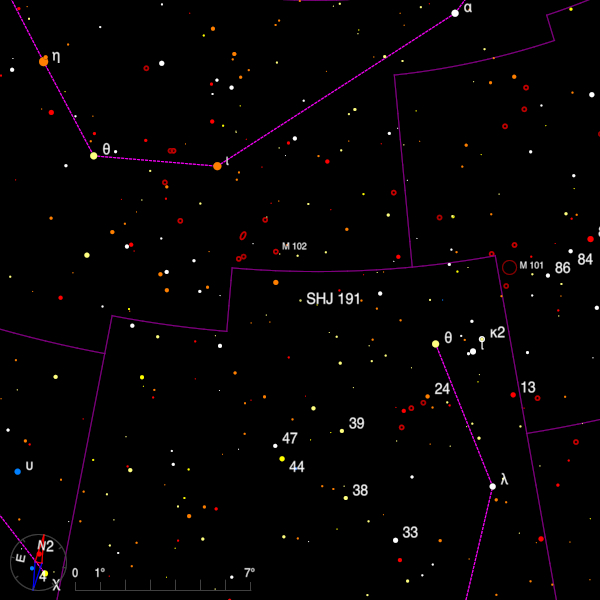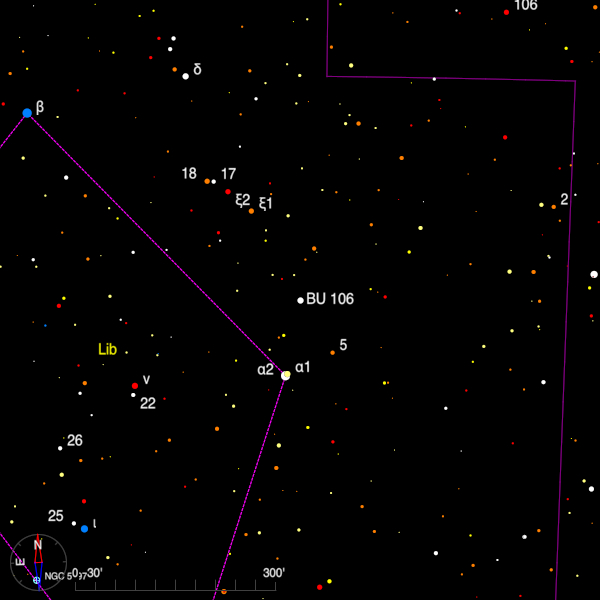May 2022 - Double Star of the Month
In the second edition of the Cambridge Double Star Atlas, SHJ 191 (14 59 34.58 +53 51 36.7) is the most northerly labelled double star in the constellation of Boötes and lies just over a degree south of the border with Ursa Major.

It was measured by Sir James South on 1823, April 27 and again on May 3 of that year using his 5-foot equatorial and he found the mean separation to be 40".85 (the text in the catalogue gives 48".85) and the mean position angle 343° 10'. These values are little changed today and whilst the proper motions determined by Gaia in the EDR3 catalogue are similar, the parallaxes appear to be significantly different, with 9.590 ± 0.122 mas for the A component and 8.875 ± 0.015 mas for B. The large error for A may indicate additional structure.
The Washington Double Star Catalog (WDS) gives magnitudes of 6.9 and 7.6 for A and B and both stars are F1 dwarfs. An interesting feature in the finder chart plotted using SIMBAD is the presence of a nearby pair of faint red stars and which are described at greater length in the upcoming Double Star Section Circular (DSSC) Number 30.
One of S. W. Burnham's more attractive pairs for the small telescope is mu Lib - also known as BU 106 (14 49 19.09 -14 08 56.3). It is easy to find sitting just 2 degrees north and slightly west of Zubenelgenubi, or alpha Cap, which is, in turn, a fine very wide pair, the stars being 376" apart.

Mu Lib was discovered by Burnham with his 6-inch Clark in 1873 when the stars were separated by 1".3, and since then they have slowly separated (currently 1".9) with a change in position angle of just 27 degrees, even so an orbit exists for the system with a period of 614 years. A and B have V magnitudes 5.6 and 6.2 and whilst the A component does not appear in EDR3 the B star has a measured distance of 245 light-years. A magnitude 12.6 star lying at PA 232 degrees and 27" from A has the same parallax and would appear to be physically connected to the binary pair.
Bob Argyle - Double Star Section Director